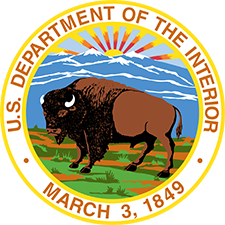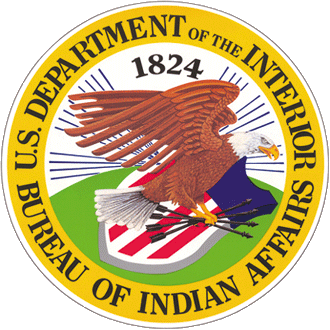You are viewing ARCHIVED content published online before January 20, 2025. Please note that this content is NOT UPDATED, and links may not work. Additionally, any previously issued diversity, equity, inclusion or gender-related guidance on this webpage should be considered rescinded.
WASHINGTON – President Obama’s fiscal year (FY) 2014 budget request for Indian Affairs, which includes the Bureau of Indian Affairs (BIA) and the Bureau of Indian Education (BIE), is $2.6 billion – a $31.3 million increase above the FY 2012 enacted level. The proposed budget maintains the President’s commitment to meeting the government’s responsibilities to the 566 federally recognized American Indian and Alaska Native tribes, while exercising fiscal responsibility and improving government operations and efficiency.
“The President’s budget request for Indian Affairs reflects his firm commitment to keeping our focus on strengthening and supporting tribal nations, and protecting Indian Country,” said Assistant Secretary – Indian Affairs Kevin K. Washburn. “While realizing the benefits from improvements to Indian Affairs program management, the request supports our mission to federally recognized tribes, particularly in the areas of trust lands and natural resource protection. The request also promotes economic development, improves education, and strengthens law enforcement and justice administration.”
Strengthening Tribal Nations Initiative
The Strengthening Tribal Nations Initiative is a comprehensive, multi-year effort to advance the President’s commitments to American Indians and Alaska Natives to improve conditions throughout Indian Country and foster economic opportunities on Indian reservations.
The FY 2014 budget request includes $120 million in increases for this initiative to support sustainable stewardship and development of natural resources in Indian Country, public safety programs that apply lessons learned from successful law enforcement pilot programs, operations at new and expanded detention facilities, contract support costs to facilitate tribal self-governance, and new and expanded payments for water rights settlements. Additionally, it provides increased funding for post-secondary education and an elementary and secondary school pilot program based on the U.S. Department of Education’s turnaround schools model and concepts.
Advancing Nation-to-Nation Relationships
The FY 2014 budget request for Contract Support Costs is $231 million – a $9.8 million increase over the FY 2012 enacted level. The Indian Self-Determination and Education Assistance Act of 1975, as amended, allows federally recognized tribes to operate federally funded programs themselves under contract with the United States – an expression of the federal government’s policy to support tribal self-determination and self-governance. Tribes rely on contract support costs funds to pay the costs of administering and managing contracted programs. It is a top priority for many tribes.
In light of the Supreme Court’s decision in Salazar v. Ramah Navajo Chapter, the FY 2014 budget request includes the Administration’s proposed interim solution to budgeting contract support costs. The Administration proposes Congress appropriate contract support costs on a contract by contract basis and will provide Congress with a contract funding table for incorporation into the Department’s FY 2014 appropriations legislation. Through tribal consultation, this interim step will lead to a long-term solution that will result in a simpler and more streamlined contract support costs process.
Protecting Indian Country
The FY 2014 budget request for BIA Public Safety and Justice programs is $363.4 million with targeted increases over the 2012 enacted level of $5.5 million for Law Enforcement Operations, $13.4 million for Detention Center Operations and $1.0 million for Tribal Courts.
The request also includes a $3.0 million programmatic increase in BIA Human Services to address domestic violence in tribal communities. A partnership between BIA Human Services and Law Enforcement will address the needs at tribal locations with high levels of domestic violence. The initiative will improve teamwork between law enforcement and social services to more rapidly address instances of domestic violence, and expand services that help stem domestic violence in Indian Country and care for its victims.
The FY 2014 budget request for Law Enforcement Operations is $199.7 million, a $5.5 million programmatic increase over the FY 2012 enacted level. The increased funding for Criminal Investigations and Police Services will enable the BIA to hire additional bureau and tribal law enforcement personnel. The request includes $96.9 million for Detention Center Operations, a program increase of $13.4 million over the FY 2012 enacted level. The additional funding for staffing, training and equipment will strengthen BIA and tribal capacity to operate existing and newly constructed detention facilities.
The request also includes $24.4 million for Tribal Courts, an increase of $1.0 million above the 2012 enacted level. The funding will be used for judges, prosecutors, public defenders, court clerks, probation officers, juvenile officers, and support staff, as well as for training and related operations and administrative costs for tribal justice systems and Courts of Indian Offenses.
The FY 2014 budget request also supports the BIA’s successful pilot program, launched in 2010, that carries out the President’s Priority Goal of reducing violent crimes by at least five percent within 24 months on four initial reservations. The targeted, intense community safety program successfully reduced violent crime by an average of 35 percent across the four reservations. In 2012, the program was extended to two additional reservations. After a year, the two new sites have experienced an increase in reported crime – a trend similar to that seen at the initial four sites. The BIA will continue to support the efforts of all six programs in 2014 with funding, technical assistance, monitoring and feedback.
Improving Trust Land Management
Taking land into trust is one of the most important functions the Department undertakes on behalf of federally recognized American Indian and Alaska Native tribes, whose homelands are essential to their peoples’ health, safety and economic well-being. The BIA’s trust programs assist tribes and individual Indian landowners in the management, development and protection of trust lands and natural resource assets totaling about 55 million surface acres and 57 million acres of subsurface mineral estates.
In 2012 and 2013, the Department undertook the most substantial overhaul of the federal fee-to-trust process in over half a century. In 2012, Interior placed 37,971 acres of land into trust on behalf of tribes and individual Indians and approved 299 fee-to-trust applications. Over the past four years, Indian Affairs has processed more than 1,000 separate applications and acquired over 196,600 acres of land in trust.
The FY 2014 budget request for the Trust – Natural Resources Management program, which assists tribes in managing, developing and protecting their trust lands and natural resources, is $189.2 million, a programmatic increase of $34.4 million over the FY 2012 enacted level. The increases support sustainable stewardship and development of natural resources and will support resource management and decision making in the areas of energy and minerals, climate, oceans, water, rights protection, and endangered and invasive species.
The FY 2014 budget request for Trust – Real Estate Services is $128.9 million, a programmatic increase of $7.7 million increase over the FY 2012 enacted level. This program carries out the BIA’s trust services, probate, and land titles and records functions, as well incorporates the Department’s trust reform improvement efforts. The request proposes a $5.5 million increase to fund authorized activities related to the Klamath Basin Restoration Agreement at $7.0 million and provides $1.5 million for litigation support for Indian natural resource trust assets management.
Advancing Indian Education
The FY 2014 budget request for the Bureau of Indian Education of $802.8 million, a program increase of $6.7 million above the FY 2012 enacted level, advances the Department’s continuing commitment to the education of American Indians and Alaska Natives from the federally recognized tribes. The Advancing Indian Education initiative addresses the full spectrum of educational needs throughout Indian Country from elementary through post secondary levels and adult education. The 2014 budget supports student academic achievement in BIE schools by initiating a $15.0 million pilot program to turnaround lower performing elementary and secondary schools, provides $2.5 million in increased funding to meet the needs of growing enrollment at tribal colleges, and provides $3.0 million in new funding for a Science Post-Graduate Scholarship Fund. The budget also proposes an additional $2.0 million for tribal grant support costs.
Achieving Better Results at a Lower Cost
Administrative Cost Savings Over the last few years, Indian Affairs has taken significant steps to reduce the administrative costs associated with the wide range of services it delivers. In addition to $7.1 million in cost-saving measures from information technology standardization and infrastructure consolidations, the FY 2014 budget request includes a reduction of $19.7 million to reflect anticipated cost savings from streamlining operations. The request also includes $13.8 million in savings from reductions to contracts, fleet management, awards, and travel.
Indian Arts and Crafts Board The budget proposes to transfer the $1.3 million funding for the IACB from the Office of the Secretary to Indian Affairs, thereby allowing Indian Affairs to oversee the implementation of the Indian Arts and Crafts Act of 1990, as amended, which contains both criminal and civil provisions to combat counterfeit activity in the American Indian and Alaska Native arts and crafts market, and the Board’s management of three museums in the Plains Region dedicated to the promotion, integrity and preservation of authentic American Indian art and culture.
Program Reductions and Eliminations
- Housing Improvement Program (-$12.6 million) Eliminates the HIP. Tribes are not precluded from using HUD funding to provide assistance to HIP applicants.
- Law Enforcement Special Initiatives (-$2.6 million) Reflects decreased participation on collaborative activities such as intelligence sharing.
- The Indian Student Equalization Program (ISEP) (-$16.5 million) Offsets $15.0 million for a turnaround school pilot program.
- Replacement School Construction (-$17.8 million) The construction program will address improving physical conditions of existing school facilities through the Facilities Improvement and Repair program.
- The Indian Guaranteed Loan Program (-$2.1 million) The funding level of $5.0 million will guarantee over $70 million in loans.
Indian Affairs’ responsibility to the federally recognized American Indian and Alaska Native tribes is rooted in Article I, Section 8, of the United States Constitution, as well as in treaties, executive orders, and federal law. It is responsible for the management, development and protection of Indian trust land and natural resources, providing for public safety and justice in Indian Country, and promoting tribal self-determination and self-governance. Through the Bureau of Indian Education, it funds 183 elementary and secondary day and boarding schools, of which two-thirds are tribally operated, located on 64 reservations in 23 states and serving in School Year 2011-2012 a daily average attendance of 41,000 students. It also provides funding to 27 tribal colleges and universities and two tribal technical colleges, operates two postsecondary institutions of higher learning and provides higher education scholarships.
###


